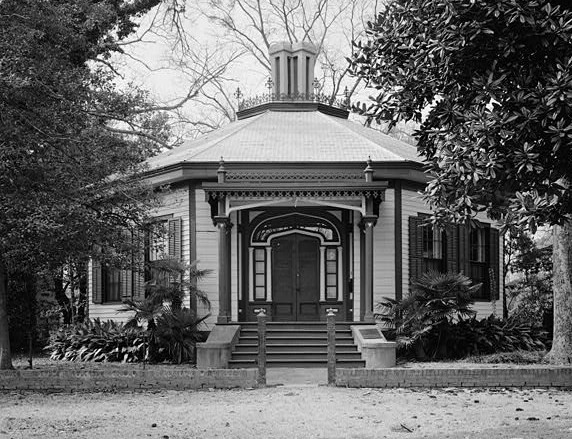Octagon House
Introduction
Text-to-speech Audio
The Octagon House is arguably the most interesting building in Columbus, if not the most photographed. It is the only known "double-octagonal" house in the country, which is the main reason it was declared a National Historic Landmark in 1973. As the description indicates, the house consists of two parts, the original dwelling built around 1830 and the octagonal addition constructed in 1863 by its new owner, Leander May, who was a cabinetmaker. When May built the addition he also converted the original dwelling into an octagonal shape. Given its unusual shape, the house was called "Mays Folly". The home is not open to the public as it is privately owned, but it is still possible to view it from the street.
Images
The Octagon House

Backstory and Context
Text-to-speech Audio
The occupants of the original part of the house were Alfred Iverson and his wife Julia Forsyth, the daughter of then governor John Forsyth. Alfred earned a law degree from Princeton and was eventually elected to the House of Representatives in 1846 and then the Senate in 1855. He is notable for being the first Senator to call for Georgia's secession (once this happened, he returned to Georgia to form a Confederate regiment; he rose to become Brigadier General and his two sons joined the army).
In 1854 a book written by a man named Orson Squire Fowler promoted the idea that houses should be built in the shape of an octagon. He believed that it provided maximum space, good ventilation and health benefits. May agreed with this philosophy and this is what inspired him to convert the house and build the addition in octagon shapes.
In 1854 a book written by a man named Orson Squire Fowler promoted the idea that houses should be built in the shape of an octagon. He believed that it provided maximum space, good ventilation and health benefits. May agreed with this philosophy and this is what inspired him to convert the house and build the addition in octagon shapes.
Sources
Biggers, Janice. "The Octagon House or May's Folly." National Park Service, National Register of Historic Places. July 29, 1969. http://focus.nps.gov/GetAsset?assetID=f166ca73-fd0b-48b5-8a23-938cdf9855fe.
"Local Columbus Historic Districts." Historic Columbus. Accessed September 4, 2016. http://historiccolumnbus.com/local-columnbus-historic-districts.
